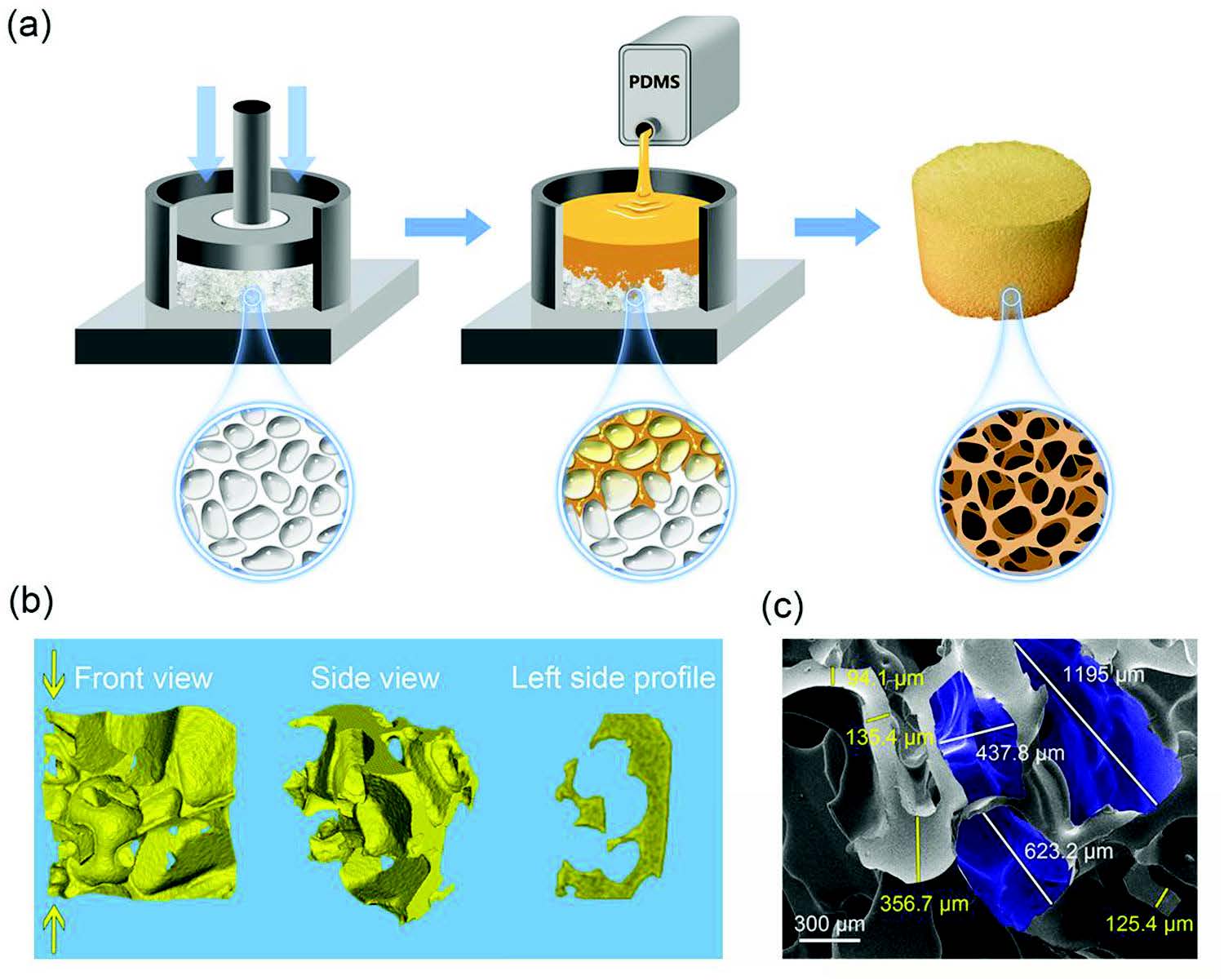| Sep 05, 2023 |
Sponge-based triboelectric nanogenerator harvests wave energy for cathodic protection and force sensing
(Nanowerk News) Scientists have developed an elastic, durable sponge that can harvest energy from ocean waves to power cathodic protection of metals against corrosion. The sponge-based device, called a triboelectric nanogenerator (TENG), generates electricity through contact and separation of internal materials.
|
|
Reported in Advanced Functional Materials ("Flexible Sponge-Based Nanogenerator for Energy Harvesting from Land and Water Transportation"), the highly customizable TENG could provide corrosion protection for structures exposed to seawater, such as ships, offshore platforms, and harbors. Beyond corrosion prevention, the scientists believe the device could also monitor wave forces to identify dangerous conditions.
|
 |
| a) Schematic diagram of the preparation of PDMS sponge. b) Front, side view, and left side profile of CT images of a 10 mm × 10 mm × 5 mm PS. c) SEM image of PS skeleton structure. (Reprinted with permission by Wiley-VCH Verlag)
|
|
Cathodic protection is an electrochemical technique that uses direct current to prevent corrosion of metals exposed to conductive fluids like seawater. The sponge TENG offers a means of generating this protective current sustainably using the renewable mechanical energy in ocean waves.
|
|
“We believe that green and environmentally friendly TENG protection technologies can be truly applied in the sea,” said corresponding author Prof. Xiutong Wang of the Institute of Oceanology, Chinese Academy of Sciences.
|
|
TENGs work through a phenomenon called triboelectrification, which generates static electricity when certain materials come into contact. As the sponge TENG compresses and decompresses in waves, its internal components rub together, giving electrons to one material while leaving the other positively charged. Electrodes then collect the electrons to generate current.
|
|
Wang’s team manufactured the sponge from polydimethylsiloxane (PDMS), a flexible, durable polymer. They used a potassium phosphate salt as a template to create the sponge’s 3D porous structure, which provides internal space for TENG operation. Tests showed the sponge withstood repeated compression with negligible deformation.
|
|
To optimize the TENG output, the researchers incorporated nanosheets of a novel 2D titanium carbide material called MXene into the PDMS sponge. The negatively charged MXene acts as one side of the triboelectric pair. The team also added a “glue” substance called polydopamine to attach the MXene sheets firmly to the PDMS matrix.
|
|
The optimized sponge TENG generated a current of 150 nanoamps at low compression forces. Output increased linearly with force up to 690 nanoamps at 80 Newtons compression. This mechanoelectrical responsiveness suggests the TENG could quantify impact forces.
|
|
Wang’s team demonstrated the sponge TENG harvesting energy from simulated waves in a water tank. They also showed its efficacy for cathodic protection by electrically connecting the TENG to stainless steel samples in saltwater. After 10 hours, the steel’s corrosion current dropped by 93% compared to unprotected samples.
|
|
The robust, customizable sponge provides a platform for TENG designs tailored to various sea conditions. “We tested several slat particles as the sacrificial templates for the improved PDMS sponge, and K2HPO4 was most suitable for the 3D interconnected structure. The flexible yet strong sponge can harvest energy and act as a force sensor,” said first author Dr. Hui Xu.
|
|
With further development, the researchers envision installing arrays of the sponge devices for cathodic protection of ships, offshore structures like oil rigs, and port infrastructure. The TENGs could also prevent corrosion of steel-reinforced concrete in marine settings.
|
|
Beyond corrosion prevention, real-time wave force data from the sponges could feed into early warning systems that alert officials or ships about impending storms in vulnerable areas. The scientists propose embedding a suite of sponge sensors along the coast to monitor wave forces across an entire region.
|
|
“This green, environmentally friendly TENG technology can enable real-world cathodic protection applications in marine environments,” said Wang.
|
|
By sustainably harnessing ocean wave energy with TENGs, the customizable sponge device provides a multifunctional platform for corrosion protection and force sensing at sea. The scientists aim to continue improving performance to ready the invention for commercialization.
|

